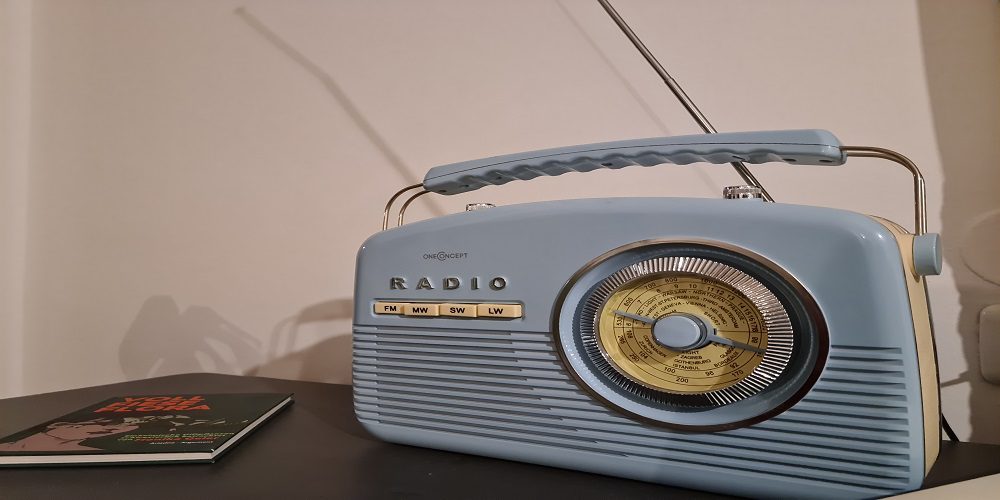Introduction
Welcome to the dynamic realm of advertising, where the impact of radio ads is both an art and a science. As businesses invest in this timeless medium, understanding and measuring the effectiveness of radio ads becomes paramount. In this comprehensive guide, we delve into the metrics, strategies, and key insights that empower marketers to gauge the success of their radio campaigns. From brand awareness to audience engagement, join us on a journey to unravel the nuanced ways of measuring the effectiveness of radio ads in the ever-evolving landscape of marketing.
Measuring the Effectiveness of Radio Ads
Measuring the effectiveness of radio ads is crucial for any business or organization investing in this form of advertising. Without proper measurement, it can be difficult to determine if the investment was worth it and if any adjustments need to be made for future campaigns. In this section, we will discuss the various methods used to measure the effectiveness of radio ads.
1. Reach and Frequency:
Reach refers to the number of people who have been exposed to your ad at least once, while frequency refers to the average number of times a person has been exposed to your ad during a specific time period. These two metrics are important indicators of how many potential customers have heard your message and how often they have heard it. Radio stations usually provide reach and frequency data based on their audience demographics.
2. Call tracking:
One of the most direct ways to measure the effectiveness of a radio ad is through call tracking. This involves assigning unique phone numbers for each radio campaign and tracking which calls come in from each number. By analyzing this data, you can determine which ads are generating more leads or sales.
3. Website Traffic:
Another way to track the impact of radio ads is through website traffic data. By using unique URLs in your ad copy or landing pages specifically designed for each radio campaign, you can track how many people visited your website after hearing an ad on the radio.
4. Surveys:
Surveys can be an effective tool for measuring brand awareness and customer response to a particular radio campaign. You can conduct surveys before and after the campaign to see if there has been an increase in brand recognition or customer interest.
5. Social Media Engagement:
Radio ads can also have a significant impact on social media engagement. By monitoring your social media accounts during and after a radio campaign, you can track any changes in followers, likes, shares, or comments. This data can give you insights into how your target audience is responding to your ad.
6. Sales Data:
Ultimately, the success of a radio ad can be measured by its impact on sales. By comparing sales data before and after a radio campaign, you can determine if there has been an increase in purchases or conversions attributed to the ad.
Tips for Creating Successful Radio Ads
Radio advertising has been a popular marketing tool for decades, and for good reason. It allows businesses to reach a wide audience at an affordable cost, making it an effective way to increase brand awareness and drive sales. However, creating successful radio ads takes more than just recording a script and hoping for the best. In this section, we’ll go over some key tips for creating successful radio ads that will make your message stand out and resonate with listeners.
1. Know Your Target Audience
The first step to creating any successful ad is to understand who you are trying to reach. This is especially important in radio advertising because you have a limited amount of time to capture the attention of listeners. Take the time to research your target audience’s demographics, interests, values, and preferred radio stations and programs. This will help you tailor your message to their specific needs and preferences.
2. Keep it simple.
With only 30–60 seconds of airtime available for most commercials, it’s crucial to keep your message concise and easy to understand. Resist the temptation to cram too much information into your ad; instead, focus on one main point or call-to-action that you want listeners to remember.
3. Use attention-grabbing sound effects.
Since listeners cannot see visuals on the radio, sound effects can be an effective way to grab their attention and make your ad memorable. Consider incorporating catchy jingles or creative sound effects that align with your brand’s image.
4. Make your brand voice consistent.
Consistency is key when it comes to building brand awareness. Use the same tone and style in your radio ads as you do in other marketing materials, such as your website and social media pages. This will help create a cohesive brand identity and make it easier for listeners to recognize your business.
5. Be creative.
Radio advertisements that stand out are those that are creative and unique. Think outside the box and come up with a catchy slogan or concept that will stick in listeners’ minds long after they’ve heard your ad.
6. Include a strong call-to-action.
A call-to-action (CTA) is a clear instruction for listeners to take action after hearing your ad, such as visiting your website or calling for more information. Make sure your CTA is strong and compelling, so listeners feel motivated to act.
7. Test your ad before it airs.
Before going live with your radio ad, test it with a focus group or by conducting surveys to see how well it resonates with potential customers. This can help you identify any weak points or areas for improvement before spending money on airtime.
The Future of Radio Advertising
The future of radio advertising is an exciting and rapidly evolving landscape. As technology continues to advance and consumer behaviors shift, the way businesses advertise on the radio is constantly changing. In this section, we will explore some key trends and predictions for the future of radio advertising.
1. Personalization Through Targeted Ads:
One major trend in radio advertising is the use of targeted ads to reach specific demographics or audiences. With the increasing availability of data and analytics, advertisers can now tailor their messages based on factors such as location, age, interests, and listening preferences. This level of personalization not only increases the effectiveness of radio ads but also makes them more relevant to listeners.
2. Integration with Digital Platforms:
In today’s digital age, it’s no surprise that traditional media like radio are becoming more intertwined with online platforms. Many stations now offer live streaming options through their websites or mobile apps, allowing advertisers to reach a wider audience beyond their local market. Additionally, companies are incorporating social media strategies into their radio campaigns by promoting hashtags or running contests during ad breaks.
3. Programmatic Advertising:
Programmatic advertising refers to the automated buying and selling of ad space in real-time using data-driven algorithms instead of manual negotiations between buyers and sellers. While still relatively new in the world of radio advertising, programmatic technology has already shown promising results by increasing efficiency and ROI for both advertisers and broadcasters.
4. Voice-Activated Technology:
With voice-activated technology gaining popularity among consumers (think Amazon’s Alexa or Apple’s Siri), there is a growing opportunity for radio advertising to integrate with these platforms. Advertisers could potentially reach listeners through voice-activated ads or even sponsor specific commands or responses from these devices.
5. Branded Podcasts:
Podcasts have become increasingly popular in recent years, and many companies are now using them as a way to advertise their products or services. In the future, we can expect to see more branded podcasts produced by businesses as a form of native advertising on radio and other audio platforms.
6. Measurement and Analytics:
As with any form of advertising, measurement and analytics are crucial for determining the success of radio campaigns. In the future, we can expect to see more advanced tools and techniques used to track the impact of radio ads, such as attribution modeling and cross-channel measurement.
7. Augmented Reality (AR) Integration:
Augmented reality (AR) technology is becoming more prevalent in advertising, and it’s likely that we will see it incorporated into radio ads in the future. With AR, advertisers can create immersive experiences for listeners by overlaying digital content onto real-world environments.
Conclusion
Radio advertising is a valuable tool for businesses looking to reach a wide audience in a cost-effective way. By targeting specific demographics, offering budget flexibility, and providing high levels of engagement with listeners, it can be an effective way to increase brand awareness and drive business growth. Consider incorporating radio advertising into your marketing strategy and following these steps to get started on creating a successful campaign.



































